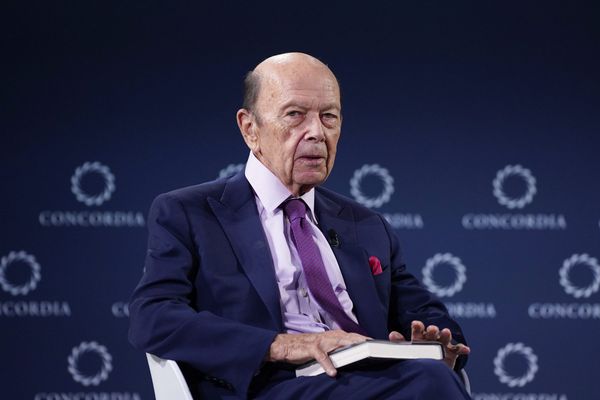
It looks like the corn market has begun its post-harvest seasonal rally. The recent USDA report and South American weather issues triggered the rally.
Why is South American weather critical to US Corn Prices?
The US produced the most corn in the 2023/2024 growing season, about 389.7 million metric tons, about one-third of the world's total corn production. Brazil has become a major competitor to the US in corn production and exports. In some years, Brazil has even surpassed the US in corn exports.
After the US fall corn harvest, the supply is not replenished until the following fall. Producers rely on carrying over old crops into the new year to fulfill demand. During January and February, corn market participants keep an eye on South American weather due to good planting weather, which could lead to more worldwide corn supply, thus lowering prices. Or, the weather is poor, which could lead to a lower supply of corn coming to the market and raising prices.


Source: United States Department of Agriculture (USDA)
January and February play significant roles in Brazil's and Argentina's corn crops.

Source: USDA
The USDA's January Crop Calendar illustrates why corn market participants are concerned about the weather in South America.
Recent weather in South America
For Brazil, Rainfall returned to the Center-West, and southern dryness expanded. Showers returned to Mat Grosso, sustaining favorable moisture conditions for the first crop of corn, but southern dryness expanded into Mato Grosso do Sul, limiting soil moisture for crops.
For Argentina, Unfavorable heat and dryness. Hot, mostly dry weather in key Central and Eastern growing areas increased stress on summer crops.
Weather Source: USDA Week ending January 11, 2025.
Recent USDA Grain Stocks report
Surprisingly, the USDA reported that corn stocks had decreased by 1% compared to December 2023. Of the total stocks, 7.66 billion bushels are stored on farms, down 2 percent from a year earlier. Off-farm stocks, at 4.41 billion bushels, are up 2 percent from a year ago. It is incredible how so much unpriced corn on farms disappeared. But opinions don't matter as much as how the market responded to the report.
Technical picture

Source: Barchart
From the all-time high in 2022 of $8.24 per bushel using a monthly continuous nearby contract chart, the corn market traded to $3.85 per bushel in August 2024. Since the lows in August, the market has rallied to $4.80. Some analysts believe prices may have gotten ahead of themselves and need a price correction to find more buyers before heading much higher. The corn market also likes stopping at or near whole dollar numbers. The next one for resistance would be $5.00.
The old crop/new crop spread is very bullish
A popular spread corn market participants watch is the July/December spread. Referring to the old crop, the July contract is the last harvest's carryover. And the new crop, December upcoming new crop.
When corn carryover supply is anticipated to be low, the July contract outperforms the December contract, and the spread rises.

Source: Barchart
The spread has been in an uptrend since mid-August 2024. Another reason to examine spreads, even if you don't trade them, is to determine if the market is in contango, near month prices lower than back month prices, or backwardation where the near months are higher priced than the back months.
When the old crop/new crop spread becomes positive, the front month is priced higher than the back month. This is a bullish scenario for market prices. Corn has more demand than supply once the spread value crosses the zero line.
Seasonal pattern

Source: Moore Research Center, Inc. (MRCI)
To add to the bullishness of the corn prices, MRCI research has found a 15-year seasonal pattern (black line) of corn prices bottoming in the late fall, after harvest, and rallying until the spring planting season has ended.
As a crucial reminder, while seasonal patterns can provide valuable insights, they should not be the basis for trading decisions. Traders must consider other technical and fundamental indicators, risk management strategies, and market conditions to make well-informed and balanced trading choices.
Corn prices ranged from September 2024 to December 2024. I wrote an article for Barchart titled "Who Else Wants to Know the Mystery Behind the Corn Market?" describing an imbalanced market waiting for a catalyst to move prices. It seems the market has received some bullish information and has reacted positively.
There are still some headwinds for much higher corn prices. While I'm bullish on corn prices due to the daily trend, I will monitor the COT reports and see if anything causes more concern than they already do.
Commitment of Traders (COT) report

Source: CME Group
Managed money has slowly built a long position in the corn market. Their buying (blue bars) over the past several weeks has increased as the price (yellow line) has increased. Typically, this would be a bullish pattern for prices. Managed money has nearly the same long position after corn traded above $8.00 in 2022. With prices trading under $5.00, does managed money have enough resources to push prices much higher?

Source: CME Group
Managed money's net position (yellow line), longs minus shorts, in the corn market is also approaching the 2022 levels. Neither of these scenarios is overly bullish for corn prices.
How are brilliant players responding to this rally?
I've described the commercial traders as brilliant players.

Source: CME Group
Corn producers have been selling (red lines) into this price rally off the harvest lows. While it's not unusual for producers to sell into rallies, what is concerning is the number of short contracts they hold. They have 986K short contracts compared to 468 K last year. Corn is trading at $4.75 per bushel compared to $8.00 in 2022, and producers already have approximately 80% of the number of short contracts now as they did in 2022.
Could this be selling in the old crop months to hedge unpriced corn from the recent harvest? Considering the old crop/new crop spread, July (old crop) is priced higher ($4.87) than December's new crop ($4.52), so it's hard to imagine hedging with new crop prices this early.
Regardless, the producers are aggressive sellers at relatively low prices. Another advantage commercials have over managed money traders is that commercials can have unlimited open contracts. In contrast, managed money, registered as speculators, can only have limited open contracts due to exchange rules.
Assets to participate in the corn market
Traders can use the standard-size futures contract (ZC) or the mini-size (XN). Equity traders can trade the exchange-traded fund (ETF) named CORN.
In closing…
The current rally in corn prices highlights both opportunities and risks for traders. On the bullish side, seasonal trends, the old crop/new crop spread dynamics, and weather uncertainties in South America all suggest upward pressure on prices. The USDA's Grain Stocks report, showing reduced on-farm corn stocks, further supports a tightening supply narrative. Additionally, the long positions held by managed money indicate confidence in the market's near-term potential. For traders, these factors provide compelling reasons to consider entering the market, especially if bullish catalysts like unfavorable South American weather persist.
However, there are significant headwinds that caution against unreserved optimism. Producers are aggressively selling into the rally, with short positions nearing historically high levels, which could limit upside potential. Managed money's long positions are approaching levels seen when prices were much higher, raising concerns about whether further gains are sustainable. The broader context of potential market corrections, technical resistance near the $5.00 mark, and a potentially oversaturated market sentiment further underscores the need for caution. Ultimately, traders must weigh these factors carefully, ensuring that decisions are based on a balanced evaluation of technical, fundamental, and seasonal indicators.







